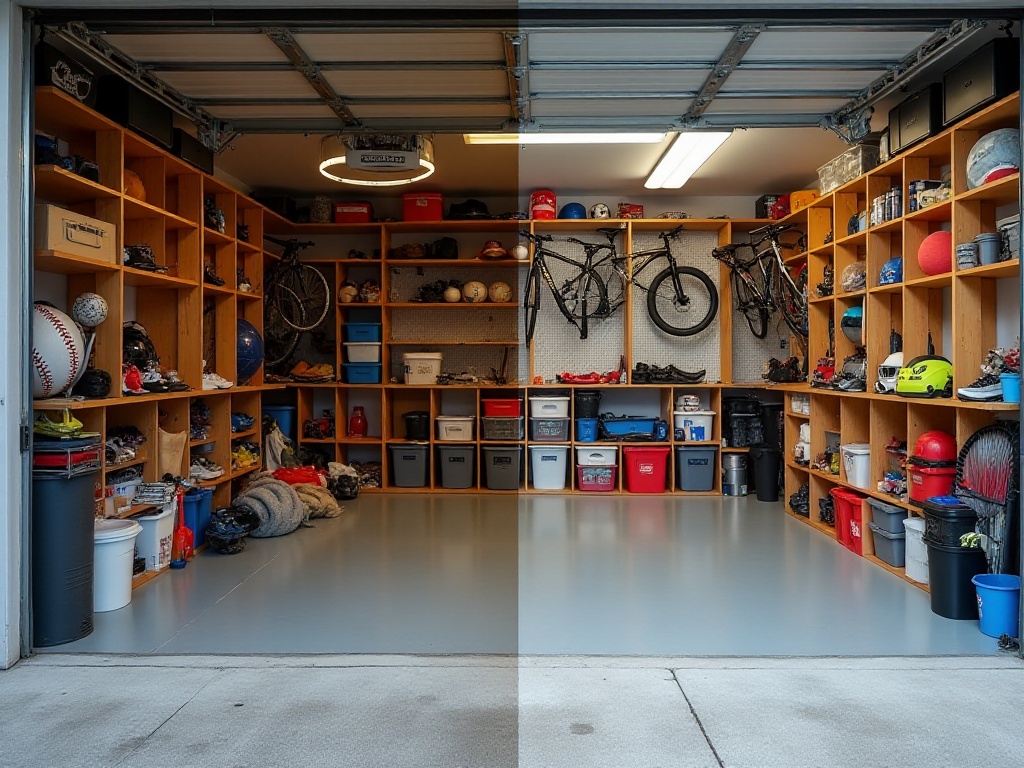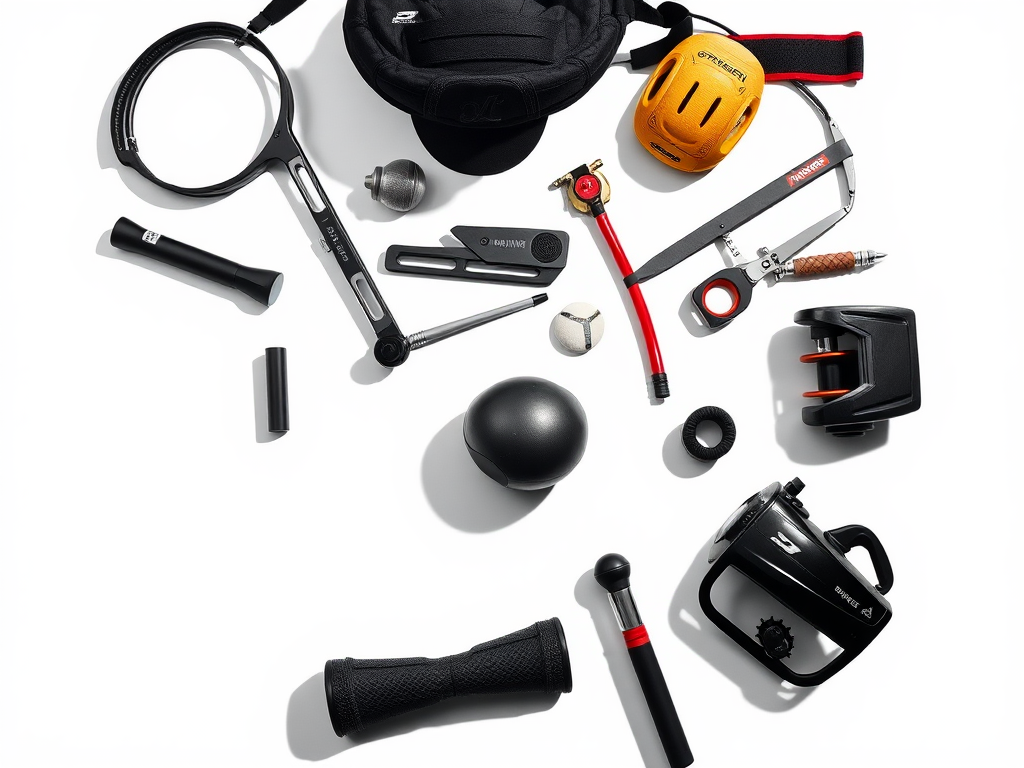Introduction
As a sports enthusiast born after 1995, I've always loved various sports, so I have tons of sports equipment at home! My home used to be like a sports equipment exhibition hall, with gear scattered throughout the living room, bedroom, and balcony, driving my mom crazy. Whenever friends came over, they would joke, "Are you running a sporting goods store?"
To be honest, this issue bothered me for a long time. The basketball by the door would get kicked around, the yoga mat would collect dust rolled up in the corner, and dumbbells were scattered everywhere, making them hard to find. The most frustrating moment was when I needed my yoga mat - after searching forever, I finally found it under the bed, covered in dust and needing a thorough cleaning.
After months of research and practice, I finally found an incredibly practical storage solution! Now my home is incredibly tidy. My friends are amazed when they visit, and even my mom has praised my progress, haha!
Space Planning
When it comes to storage, the key is proper space planning. I've noticed many people only utilize floor space while ignoring the potential of walls and ceilings. By my calculations, properly using vertical space alone can save you over 40% in storage area - that's no small number!
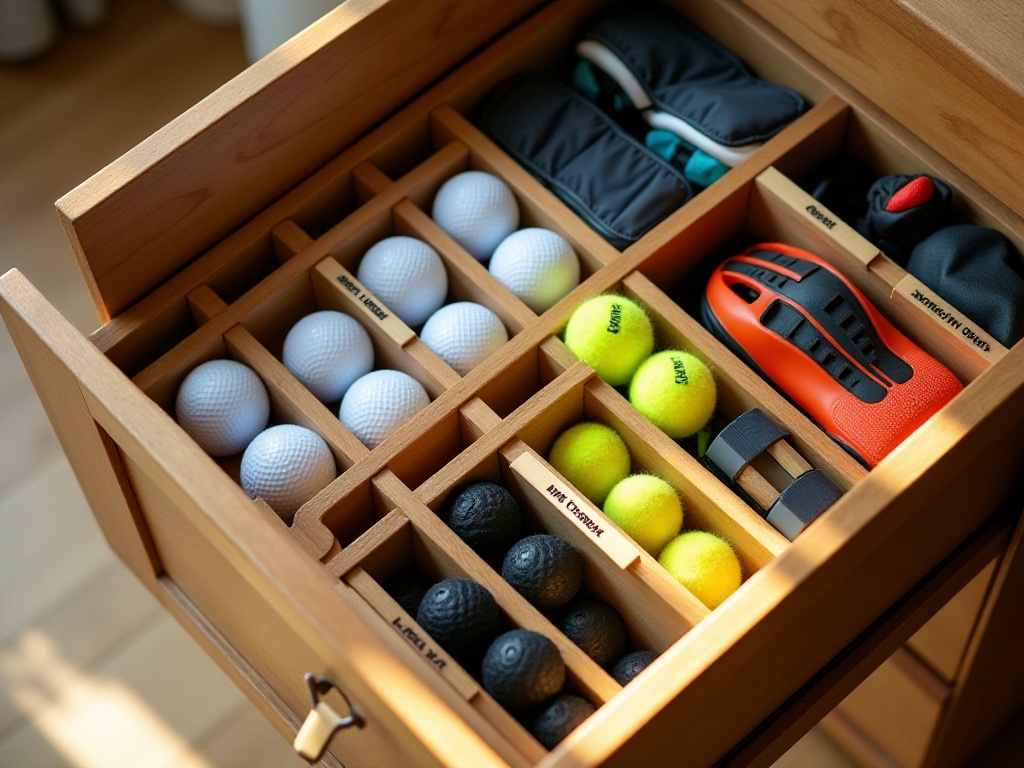
Clever Wall Usage
Walls are absolute storage treasures! I bought an adjustable hook system online for less than $200, which solved most of my storage problems. The best thing about this system is that you can adjust the position and spacing of hooks according to equipment size.
I hung my most-used basketball 1.5 meters from the ground, perfect for easy access; tennis and badminton rackets hang beside it, looking quite professional. You won't believe how much I've managed to fit on my 2m × 3m wall: 2 basketballs, 3 rackets, 1 jump rope, 2 yoga straps, plus a small storage basket (for wristbands, knee pads, and other small items). Most amazingly, the wall doesn't look cluttered at all - it actually has a sports theme wall feel!
Here's a pro tip: consider practicality when positioning hooks. For instance, I hung the frequently used basketball in the most accessible spot, while the skateboard is mounted slightly higher since I use it less often. It's both aesthetic and practical - perfect!
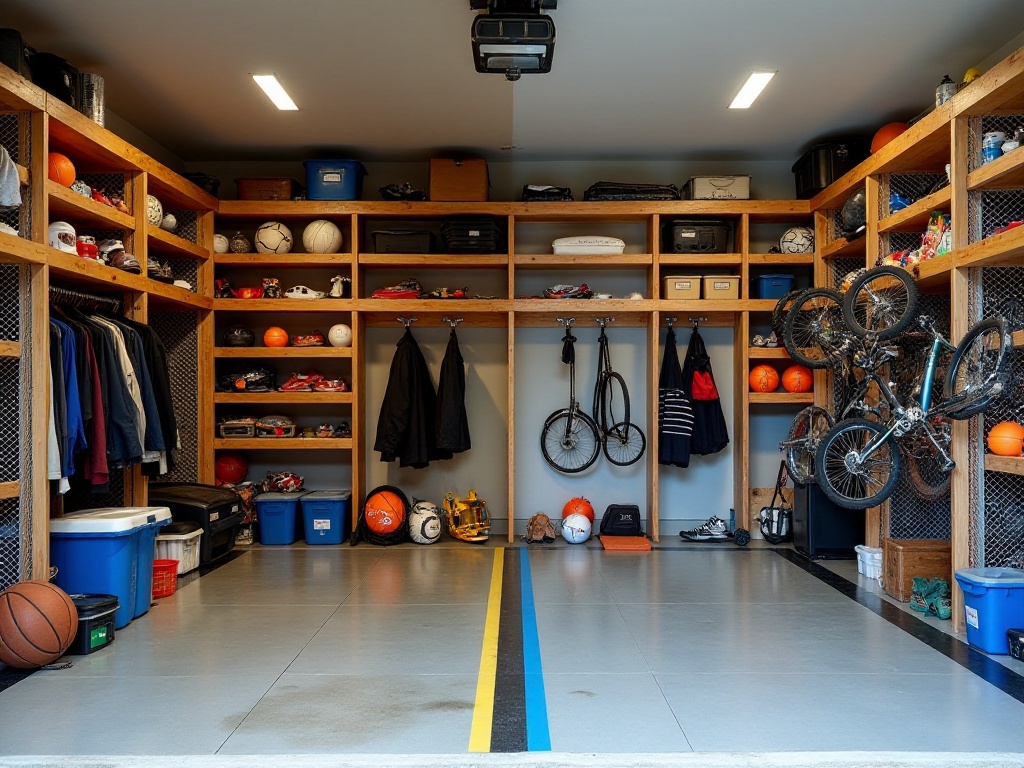
Ceiling Storage
Speaking of ceiling storage, this is my masterpiece! Initially, I didn't think about using the ceiling for storage until I got inspired by a home improvement show. I immediately took action and installed a track storage system in the garage, finally finding a place for my surfboards and skis!
The system works like this: two parallel tracks are installed on the ceiling, with wire ropes creating an adjustable storage platform. Lower it when you need equipment, raise it when you don't - couldn't be more convenient! My garage ceiling is only 2 square meters, yet it holds 2 surfboards, 1 set of skis, and a large yoga ball.
Most importantly, once these large items are raised, the floor becomes completely open. The garage floor used to be like a mountain of stuff, but now we can park there, which makes my dad very happy! One reminder though: always hire professionals to install ceiling storage systems to ensure proper weight support - safety first!
Classification System
Large Equipment Storage
When it comes to storing large sports equipment, bicycles are the most challenging. I have two: a mountain bike and a road bike. They used to just stand on the balcony, taking up space and exposed to weather damage. After extensive online research, I discovered the vertical storage solution!
I installed two bike mounts on the garage wall, and now both bikes hang vertically, not only saving tons of space but also looking stylish - they're practically a wall feature! I even installed a small shelf nearby specifically for the pump and repair tools, making everything easily accessible.
Here's a usage tip: clean the bikes before hanging them to keep the wall clean. Also, position them appropriately - too high is inconvenient, too low risks bumping into them. Based on my height, I positioned the crossbar at about 1.7 meters, making it easy to handle.
For super-large equipment like treadmills, I recommend designating a fixed spot. I put my treadmill in a corner of the study, where it can be folded when not in use and unfolded when needed. I kept the surrounding space clear to avoid feeling cramped while running.
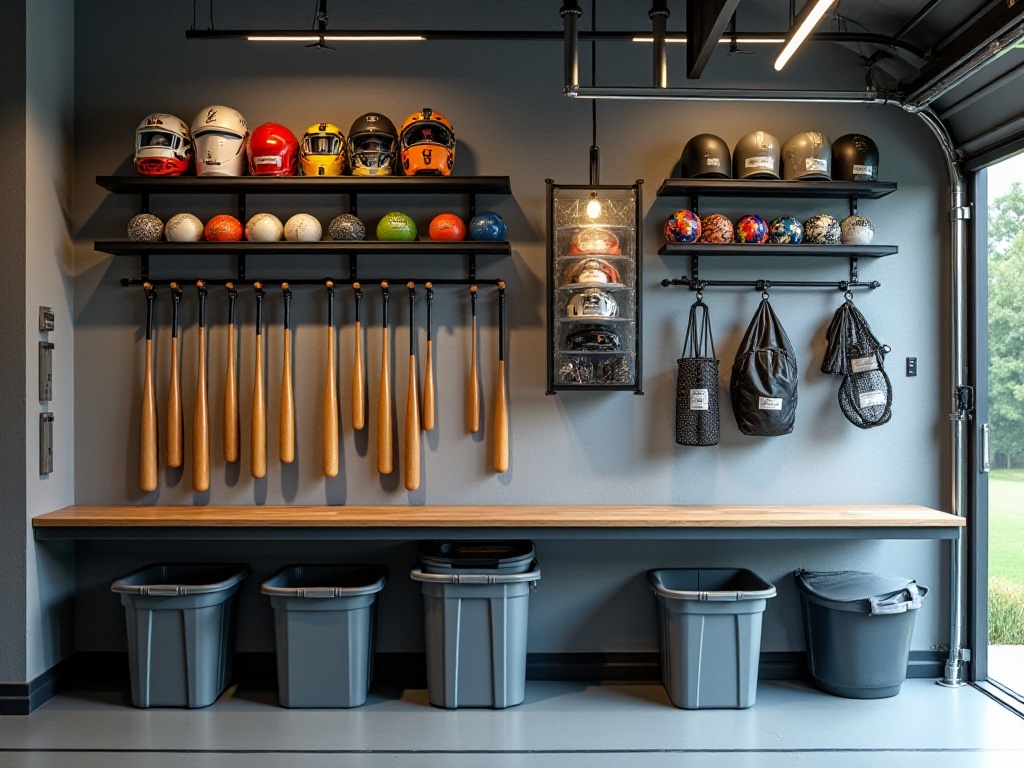
Small Item Organization
Small equipment, though compact, can create chaos due to their quantity. My solution: categorization + transparent storage boxes. I bought various sizes of transparent boxes online and categorized items by sport type and frequency of use.
For example, I grouped all ball-related items together: tennis balls, shuttlecocks, and ping pong balls in separate small boxes, all labeled. Protective gear is also sorted: wristguards, knee pads, and ankle supports each have their own box. Best of all, I labeled each box with different colors: blue for ball-related items, green for protective gear, and yellow for other accessories.
I arranged these storage boxes in two layers: frequently used items on the bottom for easy access, less used items on top. Every box is transparent, so you can see the contents at a glance without opening each one.
Here's another super useful tip: attach an inventory list to the side of each box. For example, the protective gear box lists "2 pairs of wristguards, 1 pair of knee pads, 2 pairs of ankle supports," making regular inventory checks super convenient and helping spot missing items quickly.
For irregularly shaped small items like jump ropes and resistance bands, I used a hook storage method. I installed a row of small hooks on the wall, each dedicated to specific items, making them very convenient to use. This storage method also prevents resistance bands from tangling and jump ropes from knotting.
Equipment Maintenance
Material Knowledge
Equipment maintenance is a serious matter! Different materials require completely different care methods - ignore this, and you might ruin perfectly good equipment. I learned this the hard way.
Let's start with balls. Leather basketballs are the most delicate - they absolutely cannot be stored in damp places, or the leather will mold and the ball will deform. I made this mistake once, leaving a basketball in a corner of the balcony where some rain got in, resulting in mold. Now I hang basketballs on a well-ventilated wall and wipe them weekly.
Carbon fiber rackets are also tricky. This material is particularly vulnerable to direct sunlight and extreme temperature changes. I once had a $200+ tennis racket deform from being left on the balcony in the sun - heartbreaking! Now I keep rackets in special racket bags stored in a well-ventilated but shaded cabinet.
Metal equipment like dumbbells and barbells have moisture as their biggest enemy. Rust not only looks bad but can also hurt your hands. My solution is to spray them with rust preventative and store them in a dry place. On rainy or particularly humid days, I wipe them down with a dry cloth.
Rubber items like yoga mats and resistance bands need protection from direct sunlight and high temperatures. I keep them rolled up in a cool place and unroll them when needed. Yoga mats especially can deform or crack if left unrolled constantly.
Daily Maintenance
Honestly, consistency is key in equipment maintenance. I spend half an hour each week specifically for cleaning and maintenance. It might sound excessive, but this habit has extended the life of my sports equipment by at least 1-2 years.
My cleaning routine goes like this: first, inspect all equipment for damage. Then clean by material type: leather items get wiped with professional cleaner, fabric items get aired out, and metal items get rust removal and prevention treatment.
For equipment with screws, like adjustable dumbbells and fitness machines, I check monthly for loose screws. This is crucial because equipment endures significant impact during use, and screws can loosen.
Another crucial detail: clean equipment before storing after each use. This is especially important for items that contact sweat, like yoga mats and grip strengtheners. If not cleaned promptly, bacteria can grow, making them unhygienic and shortening their lifespan.
Conclusion
Through this storage system, my sports equipment has finally said goodbye to chaos. Equipment that used to take up 10 square meters now only needs less than 4 - it's amazing! Most importantly, when I want to exercise now, I don't have to search everywhere for equipment, which has greatly increased my motivation to work out.
This storage system might seem complicated, but it's actually quite simple if you follow it step by step. Once you develop good habits, maintaining it becomes effortless. Now after exercising, I can neatly put away all equipment in just a few minutes.
Finally, storage isn't the goal - making exercise more convenient is key. Proper storage not only protects equipment and extends its life but more importantly makes our fitness lifestyle easier and more enjoyable.
By the way, how do you store your sports equipment? Any unique tricks? Feel free to share in the comments - your method might help others struggling with storage!


